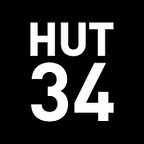Building An Open Global Superintelligence
The majority of AI driven bots, though improving, are more often than not shallow in their domain, and not much more than toys. How many times have you heard “I’m sorry I can’t answer that” or “I don’t know”? Data volumes are growing rapidly as the IoT continues to accelerate, but it remains either fragmented in the hands of many producers — who struggle to profit from it — or tightly controlled by large corporates who hold the keys its monetisation.
Imagine instead a world where there was no more “I’m sorry I can’t answer that”. A world where all bots (IoT devices and any digital services) could talk and exchange their unique information or knowledge directly with each other. A world where end users can easily connect to this entire ecosystem through any of the bots (or services) already connected to that network. That is, talk to one bot and reach the intelligence of all bots. An open global superintelligence.
Imagine a world where monetisation was in the hands of the developers and producers. Where each bot (or service) creator could choose which bots it (and their users) spoke to, and how all its interactions were routed, ranked, resolved and monetised? What if the information exchanged had a marketplace for all connected bots and services to transact in? What if that marketplace allowed information to be fairly priced and transacted through frictionless, trustless, micro-payments.
The Hut34 Project wants to realise this vision.
At its core, our team is building a blockchain based ‘switch’ where each network node, which we call Huts [1], will facilitate the open exchange and monetisation of data, information, and digital services. Allowing developers, domain experts and all participants to Connect — Route — Resolve and Monetise.
We believe economic incentives are equally as important as technological enablement. A network driven by technological and economic incentives serves all participants better, making everyone smarter and more fairly rewarded. Economic incentives come through market mechanisms assigning value to contributors data, information and knowledge . Use of distributed ledger technology and the creation of the ERC20 compliant ENTROPY [2] token (ENTRP) allows participants, in a trustless environment, to monetise these data transactions or exchanges. Creating an ecosystem where contributors or producers are fairly rewarded and users of valuable information pay a fair price.
Each Hut on the network can be configured to provide a variety of applications. Some examples are:
- They can act as a “Bot Hut” facilitating connections between one to one, or one to many, connected bots or other digital services. Bots can share their domain knowledge and earn ENTRP for doing this.
- A Hut can connect IoT devices to the network, such that each time data is called from a Hut connected device the producer of that information is rewarded with ENTRP.
- Alternatively, developers can configure their Hut to provide processing services to network participants; for example they may provide advanced AI ranking or resolution algorithms for network routed queries. Other network users could choose to route their queries specifically to such Huts, paying a ENTRP fee for superior query resolution capabilities.
- A Hut could be used as a tool for business and marketers to feed advertising into the network. Marketers would of course need to spend ENTRP to do this, and this would serve as payment for those Huts that chose to deliver these advertisements to their end users.
Of course Huts can serve all of these roles concurrently, or a mixture thereof. All Huts offer the functionality of Connect, Route, Resolve, and Monetise.
To ensure the success of the project, the Hut34 team are also concurrently building a Hut as a Service offering — The Hut34 Platform. On the platform, Huts are hosted and will provide all the features that are available in a downloaded Hut, however use of the platform reduces efforts required by users in deploying, hosting and maintaining an individual Hut. The Hut34 Platform is now in alpha/proof of concept, with a range of bots and services connected and transacting information.
More information can be found in the project whitepaper.
[1] Why did we call them Huts?
During WWII, Bletchley Park UK was the centre for the Government Code and Cypher School (GC&CS) and was responsible for decoding messages largely encrypted by the enigma machine. The buildings labelled ‘Hut 3’ (German Army & Air Force) and ‘Hut 4’ (German Navy) were tasked with the translation interpretation and distribution of messages deciphered in Huts 6 & 8, respectively, Hut 8 being made famous by Alan Turing, one of the fathers of modern computing and Artificial Intelligence.
Just as the Huts 3 and 4 distributed data to where it was needed, our Huts provide a unique and useful connection between those who have information and those who wish to use it.
[2] ENTRP Token and Information Entropy .
As distinct from more commonly understood thermodynamic entropy, information, or Shannon’s entropy, as introduced by Claude E. Shannon in his 1948 paper “A Mathematical Theory of Communication”, can broadly be thought of as the measure of uncertainty of information in a system. In a state in which an outcome is most uncertain, its information level is highest and it has the highest level of Shannon’s entropy.
The Hut34 economic system abstracts this concept. In this system data, information or knowledge which is more ‘uncertain’ or more difficult to obtain should attract the highest ENTRP value as its information content is highest. On the other hand, data which is commonplace, known or easily obtainable has a lower information content and hence less ENTRP value.
